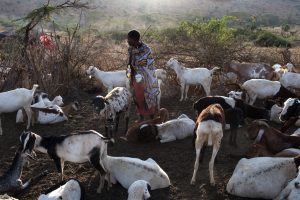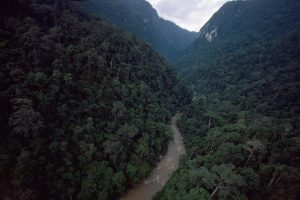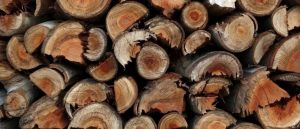 Nearly a year ago, the New York Times ran a devastating story about the deforestation crisis in Malawi and its impact on residents of Lilongwe, Malawi’s capital city. Illegal cutting of nearby forests was causing water shortages and disrupting the city’s hydroelectric power supply, forcing the government to deploy soldiers to protect the forests. The root of this problem was Malawi’s dependence on wood for meeting energy needs―more specifically, charcoal. Nearly 97 percent of Malawian households depend on wood or charcoal for cooking or heating. Even in urban areas, 54 percent of households use charcoal (a product of wood) for cooking. But there are only so many trees.
Nearly a year ago, the New York Times ran a devastating story about the deforestation crisis in Malawi and its impact on residents of Lilongwe, Malawi’s capital city. Illegal cutting of nearby forests was causing water shortages and disrupting the city’s hydroelectric power supply, forcing the government to deploy soldiers to protect the forests. The root of this problem was Malawi’s dependence on wood for meeting energy needs―more specifically, charcoal. Nearly 97 percent of Malawian households depend on wood or charcoal for cooking or heating. Even in urban areas, 54 percent of households use charcoal (a product of wood) for cooking. But there are only so many trees.
Malawi is one of the poorest countries in Africa, where electricity is an uncommon luxury and subsistence farming is the norm. With seemingly few options and climate change adding uncertainty, the situation depicted in the New York Times article seemed hopeless. But Malawi’s government has confronted the deforestation crisis boldly, and has taken several critical steps towards a solution.


 Kenya has a land problem. Africa itself has a land problem. The continent seems so vast and the land so open. The awesome sense of space is an inextricable part of the beauty here — the unadulterated vistas, the endless land. But in a way, that is an illusion.
Kenya has a land problem. Africa itself has a land problem. The continent seems so vast and the land so open. The awesome sense of space is an inextricable part of the beauty here — the unadulterated vistas, the endless land. But in a way, that is an illusion. As one of our most powerful
As one of our most powerful  Topher White spends a lot of time walking in—and thinking about—the forest, and how quickly we’re losing it. So much so that he’s gotten a black eye from being smacked by flying tree branches.
Topher White spends a lot of time walking in—and thinking about—the forest, and how quickly we’re losing it. So much so that he’s gotten a black eye from being smacked by flying tree branches.  At the 2015 Paris climate conference, the United States and 196 other nations agreed to combat climate change by cutting their greenhouse gas emissions. The
At the 2015 Paris climate conference, the United States and 196 other nations agreed to combat climate change by cutting their greenhouse gas emissions. The  International charity Oxfam is leveraging new technologies to spread the word about crises happening around the globe, as well as exploring the use of 3D printing, drones and internet of things sensors as new ways of delivering aid and solving problems in the developing world.
International charity Oxfam is leveraging new technologies to spread the word about crises happening around the globe, as well as exploring the use of 3D printing, drones and internet of things sensors as new ways of delivering aid and solving problems in the developing world.